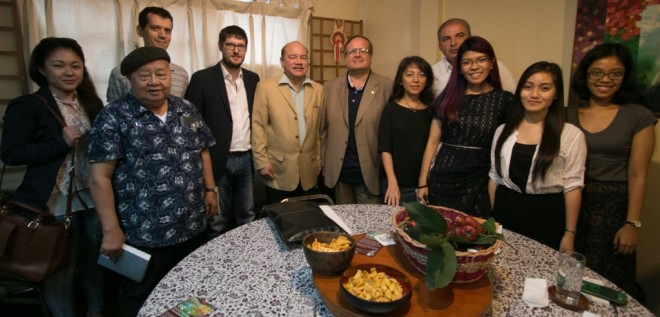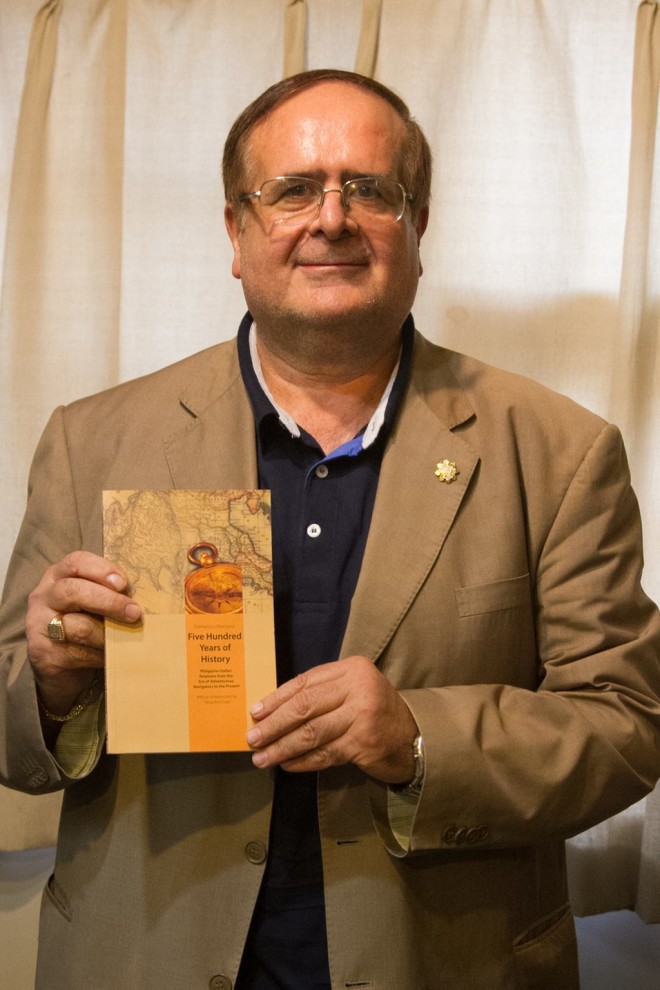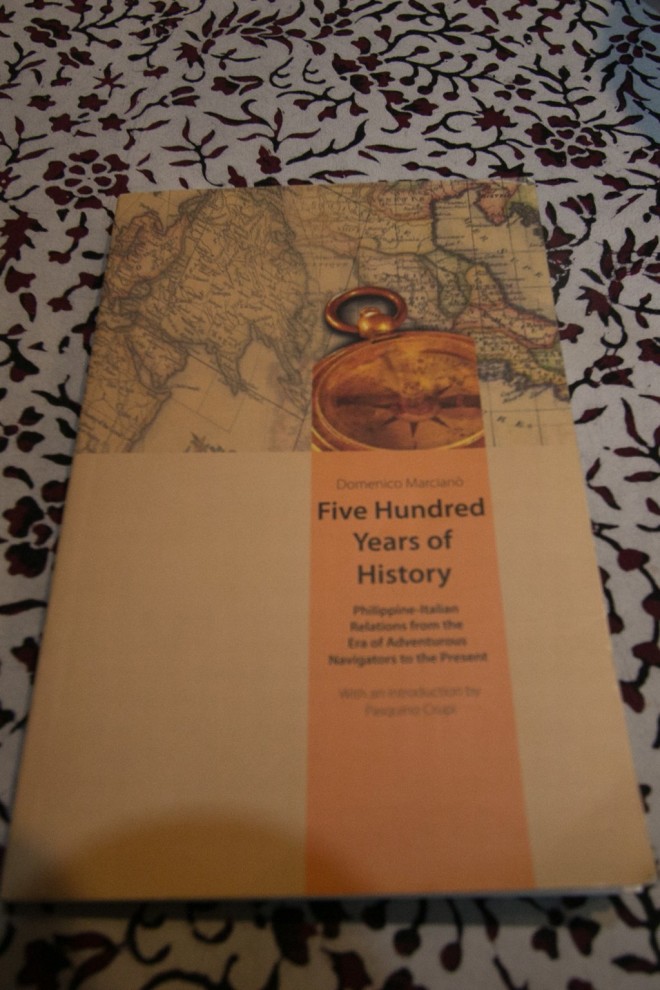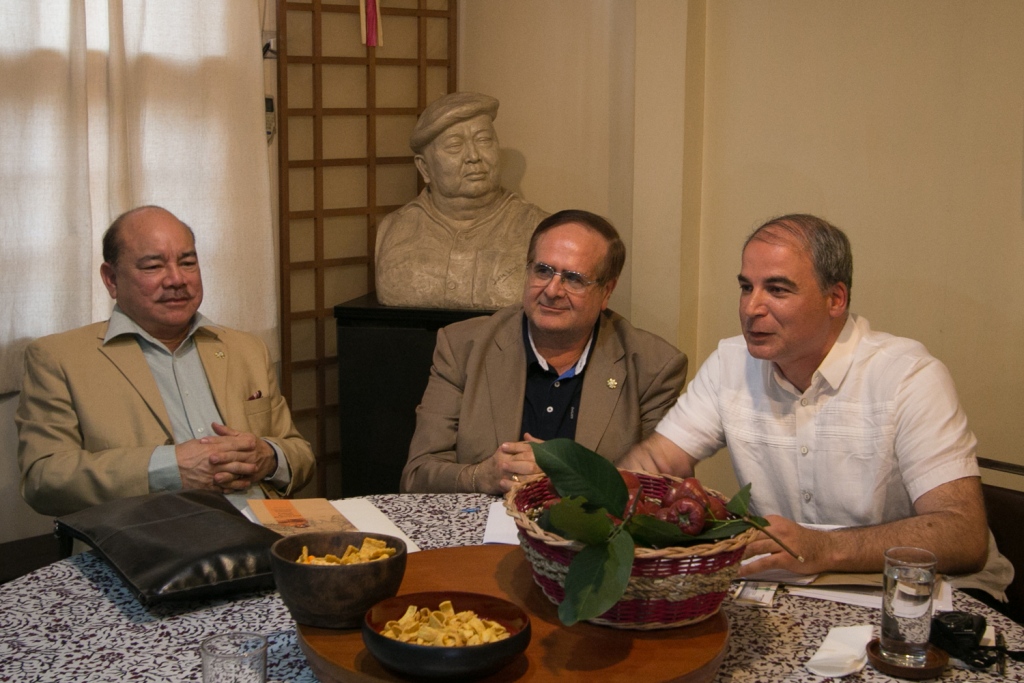
The recent death of Italian writer-semiotician Umberto Eco (Feb. 19, the same day as American novelist Harper Lee’s) sent ripples of sadness and loss in the Philippine literary circle.
That would seem to show the popularity and importance of Italian culture to Filipinos. Things Italian are, indeed, deeply embedded in our culture—from literature to music, cuisine to fashion, technology to architecture, cinema to fine arts.
Just a week before Eco’s passing, as if with prescience, a small gathering billed as “A Philippine-Italian Literary Encounter” was held at Solidaridad Bookshop on Padre Faura Street in Ermita, Manila.
It was hosted by National Artist for Literature F. Sionil José; emceed and moderated by Inquirer Lifestyle’s Arts & Books editor Lito Zulueta; and presided by former ambassador to Italy Virgilio Reyes Jr.
The main event was the relaunch of “Five Hundred Years of History: Philippine-Italian Relations from the Era of Adventurous Navigators to the Present,” an anthology of documents and essays compiled by Domenico Marciano and published by the National Commission for Culture and the Arts in 2007.
Marciano, former consul general of the Philippines in Reggio Calabria and founder of Associazione Italia-Filippine, opened his remarks at the gathering: “It is with great pride and emotion that I am here today with you in Manila after 14 years.”
Among the guests were Poets, Essayists & Novelists vice chair Charlson Ong; students from the Dante Alighieri Society and its chair Alessandro Iellamo; a few journalists and publishers.
Some untold stories
There was a reading of poems by Dante, Gabriele d’Annunzio, Gemino Abad and Reyes. This was followed by an open forum on Marciano’s book.

Focusing on the history of Italian-Philippine relations, it is, said Marciano, “perhaps at the moment the only study on the topic supported by verifiable documents.” He said he did three years of research and study in Philippine, Italian and Spanish archives.
It is a small book that speaks volumes. In exactly 100 pages of text in small print, it reveals not only basic information and technical details, ranging from culture and history to economics, but also stories that may have escaped even educated Filipinos.
Who knows Ferdinand Magellan’s and Sebastian Elcano’s chronicler Antonio Pigafetta was Venetian? That he was the man who recorded the first voyage around the world, and quite literally put the Philippines on the map?
That this Italian translated the Cebuano language, the first ever on record? (He has a 15-foot bronze statue by National Artist Abdulmari Imao on Mactan in Cebu, unveiled in 1980.)
Who knows Filipino painter Juan Luna was friends with Italian general Giuseppe Garibaldi? (Though remaining neutral, Italian nationalists followed with extra interest the development of the Philippine Revolution.)
Extent of relationship
The round-table discussion was enlivened by light remarks, such as some funny anecdotes of José.
The significance of Italian culture in Philippine life is generally acknowledged. Filipinos are the fourth-largest migrant community in Italy. Yet most Filipinos don’t seem to know much about the extent of this relationship.

The Philippine-Italian Association is turning 54 this year. Yet in the ’60s there were only two or three Italian restaurants in Manila.
The Filipino elite associates Italian with no more than luxe furniture, leather goods and fast cars. The culturati talk of Fellini, Pavarotti or the Mafia. And the masses cannot go beyond pizza and spaghetti.
Even the literati, who should know better, do not seem to go any deeper. The young among them may have thought of Eco as the greatest Italian writer since Dante (and Harper Lee a major writer).
The 69th anniversary of Philippine-Italian Friendship Day will be celebrated this June. The bilateral relation was established in 1947 but expanded only after the Edsa Revolution in 1986.
Italy was the first country to recognize the presidency of Corazon Aquino.
















































